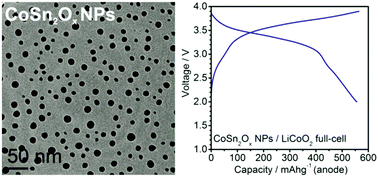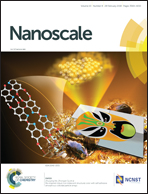Oxidized Co–Sn nanoparticles as long-lasting anode materials for lithium-ion batteries†
Abstract
Herein, we present the synthesis and systematic comparison of Sn- and Co–Sn-based nanoparticles (NPs) as anode materials for lithium-ion batteries. These nanomaterials were produced via inexpensive routes combining wet chemical synthesis and dry mechanochemical methods (ball milling). We demonstrate that oxidized, nearly amorphous CoSn2Ox NPs, in contrast to highly crystalline Sn and CoSn2 NPs, exhibit high cycling stability over 1500 cycles, retaining a capacity of 525 mA h g−1 (92% of the initial capacity) at a high current density of 1982 mA g−1. Moreover, when cycled in full-cell configuration with LiCoO2 as the cathode, such CoSn2Ox NPs deliver an average anodic capacity of 576 mA h g−1 over 100 cycles at a current of 500 mA g−1, with an average discharge voltage of 3.14 V.



 Please wait while we load your content...
Please wait while we load your content...